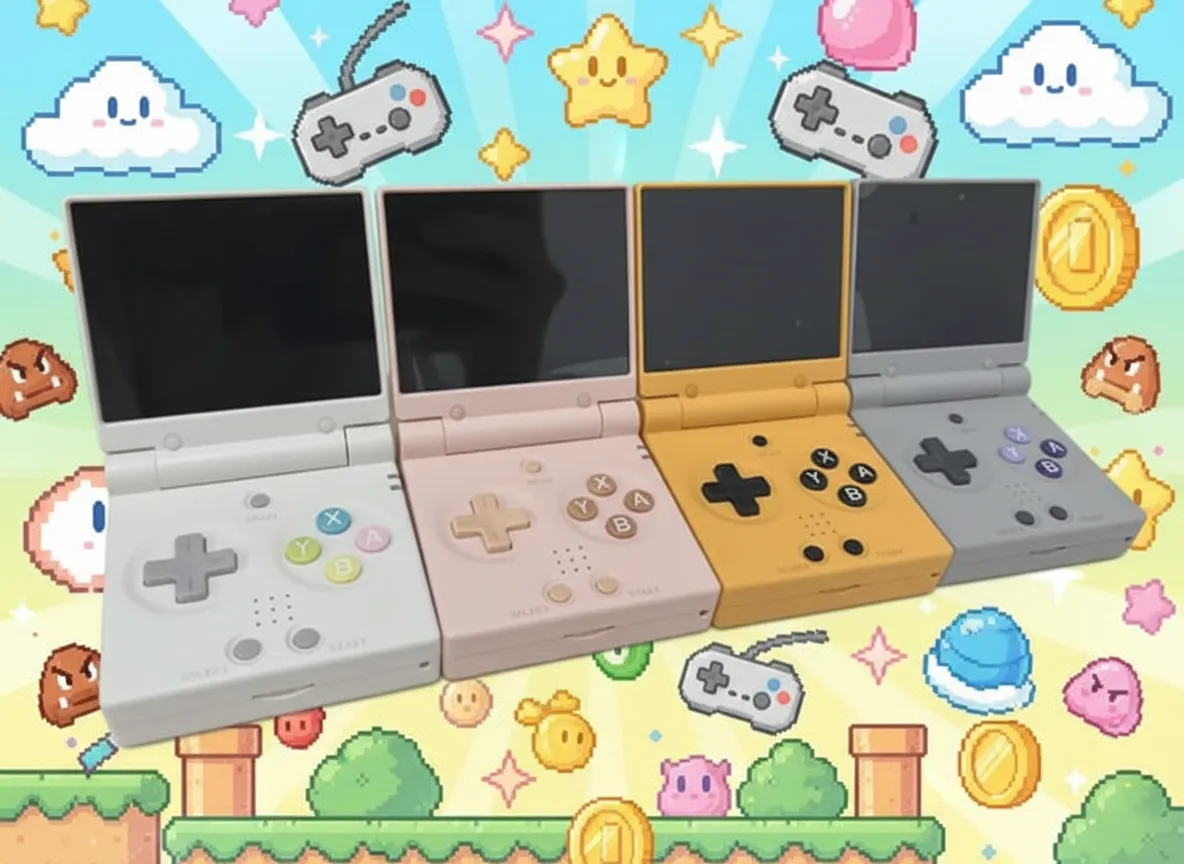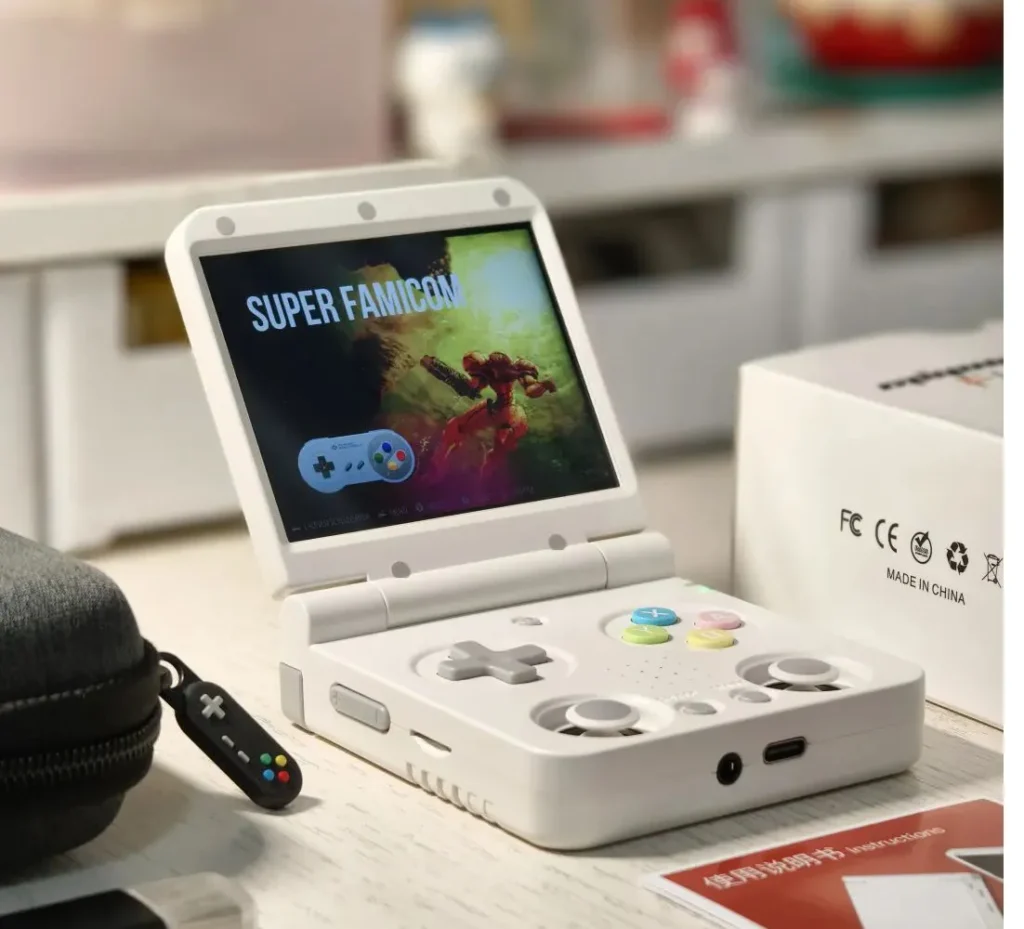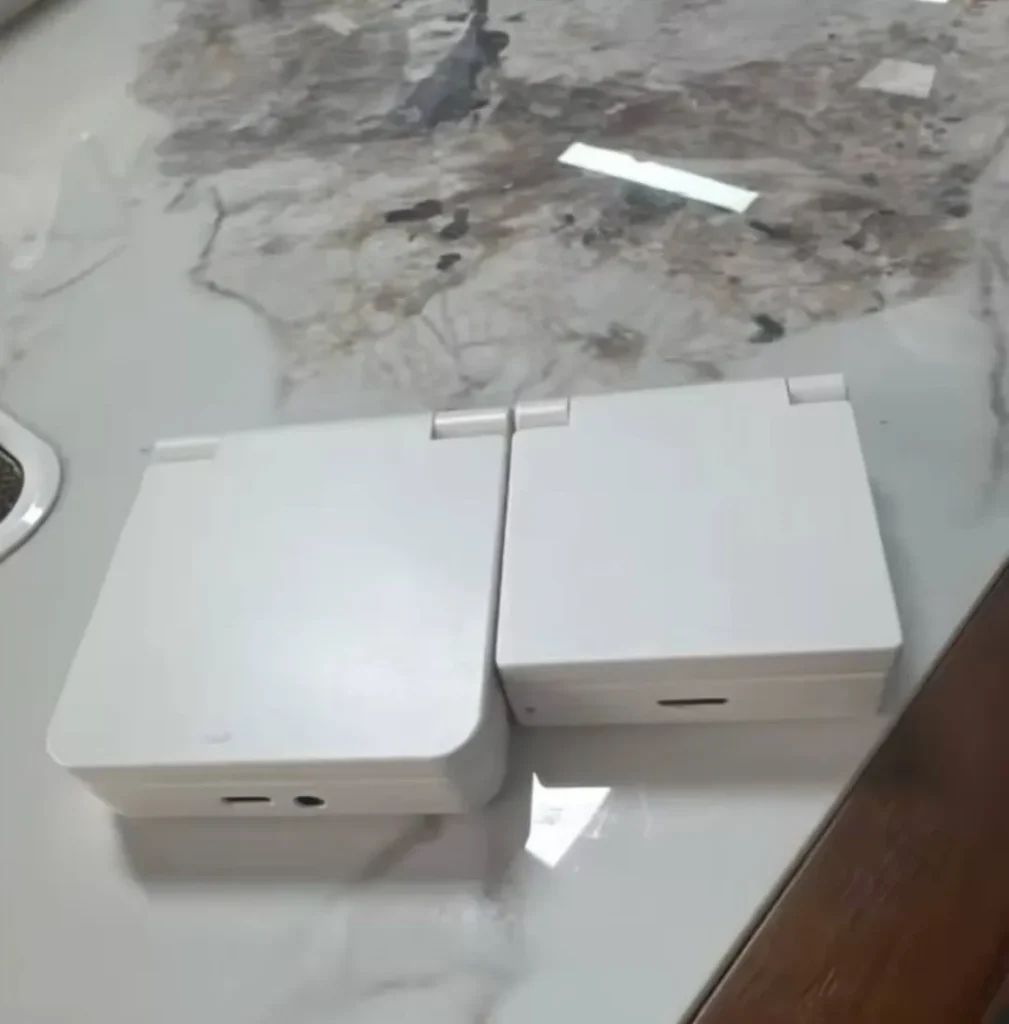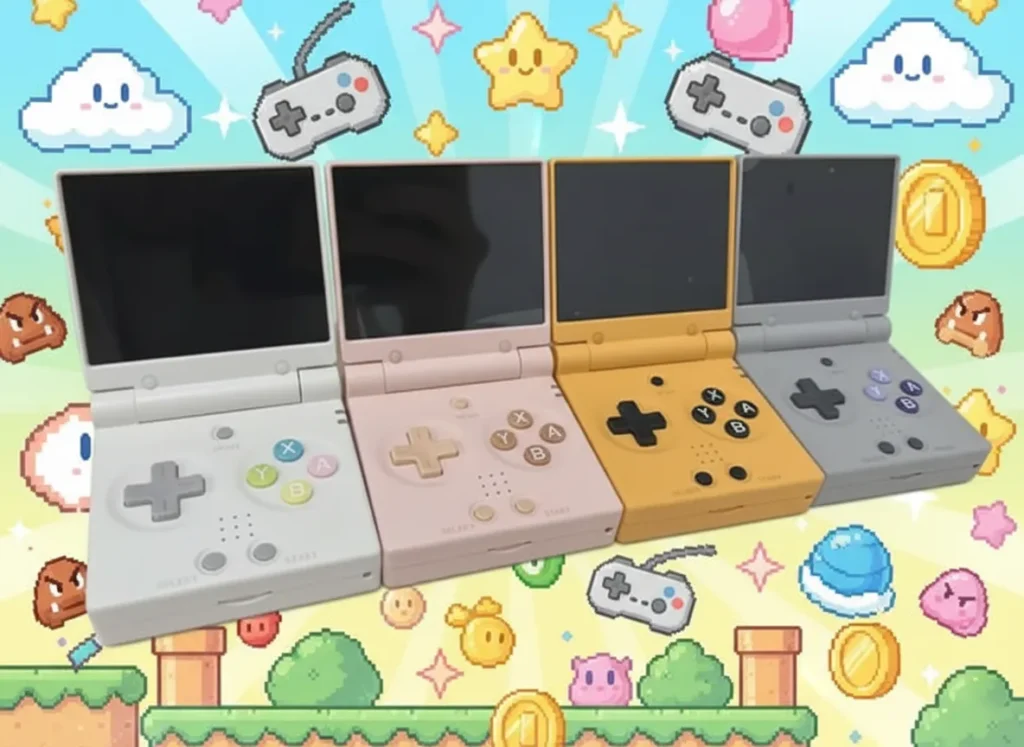contact Boss
Don’t rush to close it, talk to our boss directly, you will get a surprise.



1900+ Users
Completed User Services

Miyoo has unveiled a new handheld game console that’s smaller, cuter, and more “toy-like”: the Miyoo Mini Flip.
The Miyoo Mini Flip has been leaked, but without the dual joysticks, its body and screen are even smaller than the Miyoo Flip, making it even more compact and portable. The screen’s bezels are incredibly narrow, giving it a very high screen-to-body ratio.

The clamshell design is compact and easy to carry, protecting the screen. When closed, it measures approximately 4.25 x 3.1 x 0.88 inches, making it stylish and travel-friendly.

The top half houses a 3.5-inch IPS screen with a 640×480 resolution, perfect for retro gaming.
The lower half houses a series of controls: a directional pad, ABXY buttons, dual analog sticks, a Start/Select button, and additional triggers. This layout ensures compatibility with a wide variety of games while maintaining a comfortable user experience.
Miyoo Mini Flip is positioned as a retro game. The retro game platforms it can simulate are mainly below the PSP, which basically do not require a joystick. Therefore, removing the joystick in exchange for a smaller body size is a good choice.

Leaks reveal that the Miyoo Mini Flip will be available in four colors: white (with pastel-colored buttons), SNES gray, pink, and yellow.
This color scheme is incredibly targeted: white with soft keys creates a clean, crisp look, SNES gray evokes a retro gaming vibe, and pink and yellow clearly appeal to trendy gamers and female gamers. Miyoo’s color palette perfectly captures both retro nostalgia and a cute, vibrant vibe.
Some people may worry that pink/yellow are too soft and will affect the purchasing intention of “hardcore players”, but there are many die-hard fans among old players who like cute colors – the key is that the manufacturer has given the choice to the market this time, rather than tying everyone to the same color scheme.
According to leaks, the Mini Flip likely shares the same hardware architecture as the Miyoo Mini V4: a 1.2GHz ARM Cortex-A7 dual-core SoC, 128MB of RAM, and a 750×560 IPS screen. This means it’s not simply a performance upgrade followed by a foldable design, but rather a portable, clamshell version of the familiar Mini experience.
This has both advantages and disadvantages: the advantage is that the community has already created a large number of front-ends (such as Onion and MinUI) and firmware support for V4, and the user entry threshold is low; the disadvantage is that this old architecture will still have performance bottlenecks when facing higher-load simulators or custom systems.
As for other configurations, to put it simply, Miyoo Mini Flip = Miyoo Mini V4 hardware + FunKey SP flip design.
Processor? Same as the Mini V4.
OS? Onion compatible (meaning you can still play to your heart’s content).
Features? It even has Wi-Fi, allowing you to sync content online like the Mini Plus.
Other rumored specifications include:
RAM: 128MB.
Battery: 3000mAh for extended gaming sessions.
Connectivity: Wi-Fi support (Bluetooth is reportedly absent).
Ports: Dual USB-C ports, a 3.5mm headphone jack, and a mini HDMI port.
Storage: Dual microSD card slots for expandable memory.
Note that the Miyoo Mini Flip is not a “shrunken Mini Plus,” but more like a dream-like remake of the Game Boy SP you secretly played under the covers as a child.
The “Mini” in its name has obvious advantages: Compared to the larger Miyoo Flip, the Mini Flip feels more like a handheld game console that slips easily into your pocket. Its folding structure also protects the screen and buttons, making it portable and easy to carry.
If it really retains the screen quality of the Mini V4 (750×560 IPS, narrow bezel), it will find a better balance between visual experience and portability.
The question is: would you whip it out on the subway and play for two hours, or would you prefer your phone?
Some veteran gamers use it as a “supplementary device”—keeping one at home as a collection and carrying one on the go to satisfy cravings. This type of usage, more than simply looking at specs, will determine its market success.
The good news is that if the hardware is really from the same lineage as V4, then the community front-end Onion and MinUI, are likely to be used out of the box. This is also a major attraction of the Miyoo series: a strong community = faster adaptation, richer themes, and plug-ins.
On the other hand, once the device adopts the new “folding” form, the button layout and system interaction may bring adaptation workload – especially when developers have to deal with screen rotation, button mapping, and power saving strategies in the clamshell state.
If you’re the type who enjoys tinkering with firmware and creating themes, these hardware iterations are actually an opportunity to add to your fun. If you just want to “get it and play with it,” you’ll have to wait for the first wave of stable firmware. Which do you prefer, “playing as soon as the community joins,” or “official optimization before release”?
When the Mini Flip arrived, the competitive landscape was even more intense than when the original Mini was released:
Miyoo’s advantages lie in its “small but fine” nature and “community culture”, while its competitors’ advantages lie in their more diversified product lines and often stronger supply chains.
The key question is: Can “familiar hardware + strong community” surpass the competitors’ new product offensive in terms of price and function?
I guess that if Miyoo’s pricing is reasonable and it remains open-source friendly, it will retain a loyal following. However, if the price is too high or supply is slow, many on-the-fence users will turn to Anbernic or PowKiddy. Will you buy for nostalgia, or switch brands for higher performance/a larger screen?
Miyoo Mini Flip is not just a “foldable version of Mini”, it is a product that tests the market – using familiar hardware, cute small colors, and a community-driven ecosystem to capture a user group that pays more attention to portability and trendy play.
If you’re already tempted by the white or SNES gray colorway, consider buying one of the first. If you’re more concerned with performance or a wider operating area, it’s safer to wait and see more complete specs and pricing. Regardless, the retro handheld game console scene is buzzing with new buzz, and that’s worth celebrating.
Now, let’s take a look in the comments: Which color will you choose? Will you order the first release or wait for reviews? Do you value community support over hardware upgrades?